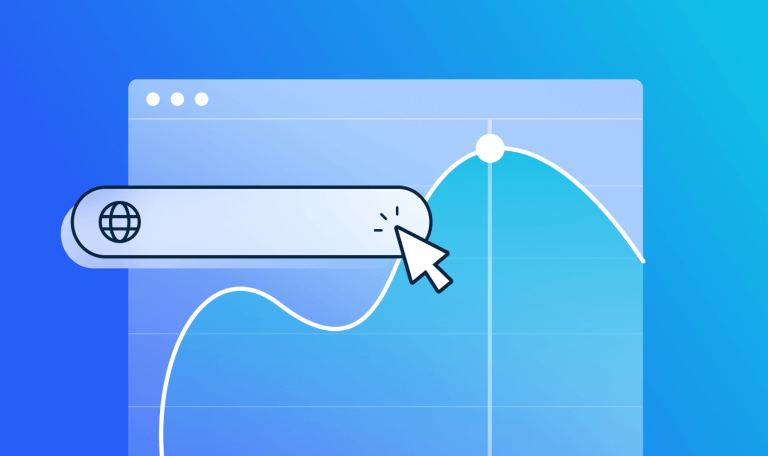Intelligent Outbound: The New Definition

Why Outbound?
As a marketer, reading anything about Outbound is likely to make you roll your eyes. You’d be forgiven for thinking that it’s basically a euphemism for spam, dialling for dollars, and door to door sales.
“Outbound..”, as one marketing site put it “is based on interruption. Inbound is based on permission”. The general theme in marketing and sales is that an inbound lead is preferable. On the surface, this seems obvious. Surely someone who is coming to your business and registering their interest is likely to be more likely to buy from you versus someone who you approached?
Not necessarily.
It’s difficult to find objective resources about this online, as the world of inbound is actually quite political. It turns out that there’s a lot of money to be made in SEO, SEM, Online Ads, Content Marketing, and the like. Companies like Google and Microsoft have also set up mailboxes to divert emails into “promotions” and “spam” folders, in order to protect individuals from unsolicited content and also make it extremely difficult to get through to a prospect.
In an extreme example, for any company running high volume inbound campaigns, you may be familiar as well with the tremendous cost of sifting through the leads in order to find qualified candidates. This is something that isn’t typically discussed, but in working with high volume inbound companies (10,000 leads per month and above), we’ve seen that what they term to be a good conversion rate sits at approximately 4-5% and in many cases, Inbound leads are converting at 1-2%.
If this is you, note that this means that 95-99% of inbound leads are not, in fact, leads.
The standard closing rate for a standard B2B lead is from 15-27%.
The B2B outbound closing rate sits at 22%.
So why does Outbound get such a bad rap?
The cynic will point to the fact that there isn’t a lot of money to be made by platforms for outbound by the companies that own our attention, but the reality is that outbound has been abused for so long that it is very difficult to separate it from SPAM.
Outbound has been dumb for a while:
Cold blasting a wide list of email addresses
Cold calling a list of phone numbers
Knocking on doors
All of the above harasses and annoys the majority in order to win over a minority.
There is a better way.
It’s something that I have been pioneering with my Sales Development agency Whistle, and if done right, is more effective, more affordable, and gets faster results than traditional inbound tactics.
We call it Intelligent Outbound.
What is Intelligent Outbound?
Picture this scene:
You’re making your way through the food court of a shopping mall. All of the restaurants surrounding you are well lit, with beautiful logos, calming music and have lines of people waiting for and purchasing food. They look trustworthy and appealing and you begin to talk to yourself:
“Do I want a sandwich or a tuna salad for breakfast?
Suddenly, as you’re having a furious debate with yourself, a young lady approaches you carrying a tray of samples of a new healthy yoghurt from a pop-up stand.
You take a sample, taste it, and are intrigued.
“Is this yoghurt all-natural?”
She nods
“Wow, it’s very tasty. Will it fill me up for the morning?”
Another nod
“What toppings do you have?”
She walks you over to a small stand in the corner where a yoghurt bar is set up and introduces you to the man behind the counter.
“This is {your name here}. He/She is looking for something to fill him/her up for the morning. Would you mind showing him/her our muesli and apple toppings?
Were you interrupted?
Yes
Were you looking for a yoghurt?
No, you didn’t even think about it as a mid-morning snack.
Were you curious to hear more once approached?
Yes, but even if you weren’t, you were still likely to be window-shopping anyway.
Were you happy to have found the yoghurt stand?
Absolutely, but even if you decided that you weren’t interested after closer inspection, you were appreciative that someone helped guide you to a possible solution to your needs.
This is Intelligent Outbound.
Outbound, in general, is used to find people who are in the ”pre-awareness” stage of decision making. It’s perfect for new and innovative solutions as people wouldn’t even know what to look for until it was right in their faces. Intelligent Outbound is a methodology that acknowledges the buyer’s profile and factors in the buyer’s real-world interactions to define a clear strategy and approach to prospecting.
Intelligent Outbound starts with recognising four key elements in the acquisition of a buyer:
- Target
- Channel
- Message
- Timing
These elements were made popular by the book ‘Outbound Sales, No Fluff’ by Rex Bilberston and Ryan Reisert (a Whistle advisor) but have now been redefined in the form of Intelligent Outbound to create a playbook that focuses on using scientific methodologies and cutting edge technology to identify an audience and interrupt a pattern of behaviour with a message that is appropriate, timely, valued and worth considering. A message that aligns directly with the target, in the right place and at the right time. A message that converts.
The advent of technologies, some of which we will mention in later paragraphs, have made this process more intelligent and accessible than ever before.
It all starts with a list.
The list is one of the most critical elements of Intelligent Outbound.
It defines the company’s sales strategy moving forward and will be the foundation for all sales and marketing campaigns that you run. If you get an element of the list incorrect, it can mean that your entire campaign is focused in the wrong direction. If this is the case, it is not a disaster, as you will see later. It just requires refocusing – a methodology that will be taught shortly.
When it comes to building a list, a target audience is usually defined by a founder or CEO based on what they perceive the product or service to support. A quick search of the stories behind bubble wrap (originally sold as wallpaper), Listerine (originally sold as an antiseptic), the slinky (originally sold to stabilise naval equipment) and viagra (designed to lower blood pressure) prove that a business owner doesn’t necessarily know their audience until they find them.
So, with that being said, how do you build a list?
The basic starting points for a B2B outbound campaign are usually focused on titles, company types, company sizes, industries, and locations. This is not a bad place to start and a list can be generated in LinkedIn Sales Navigator or purchased online from reputable data providers. This list can be intelligently refined to add elements such as intent data or behaviours that indicate a possible need or fit between a company and a solution.
An intelligent approach would be to start with the why element, before the who:
Why would this person want to talk to me, about what solution I provide at this time and on this channel?
Here is a real-life example:
When WireCard, a global payment provider announced bankruptcy, Whistle used Similarweb’s Sales Solution to identify a list of their top 100 customers to prospect to, on behalf of one of our clients. If you were a WireCard top 100 client, then you’ve probably heard from us and may have agreed to a conversation with our client. You may be working with them too.
It’s our pleasure.
ClearBit, a company that maps website visitors and enriches data to help companies identify who’s browsing their site or who is searching for applicable terms is another example of using intent data to drive a conversation. By adding more data elements to enrich a person’s profile, a seller is better equipped to consider the motivations of the prospect and how best to appeal to them.
The framework for intelligent outbound sounds a lot like that for building an inbound marketing campaign – right?
The difference is that with intelligent outbound YOU choose who to talk to, not the other way round.
Layering these elements over the traditional list building exercise gets you 50% of the way to building an intelligent list.
The other 50% needs to focus on data validation and relevance.
In other words, if I believe that my company is likely to be valuable to CMOs at technology companies based in the US with over 5000 employees. Plus, I now know of a list of CMOs whose companies have been searching for solutions in my space and can identify who is likely to have visited my website, I simply need to put all of that intelligence through the strainer of data validation, meaning manually confirming the channel health and likely deliverability of the message and a final layer of relevance to ensure that a) the contact is the right person to speak with and b) you have something intelligent and applicable to say to them.
This process forms one of the most important elements in any campaign that the Whistle team runs and has allowed us to bring in on average $3 million per month worth of pipeline for our global customers, who are usually well-funded startups looking to break into new markets or accelerate and scale sales activities in a logical way.
The #1 affiliate marketing research tool - get started
Give it a try or talk to our marketing team — don’t worry, it’s free!








